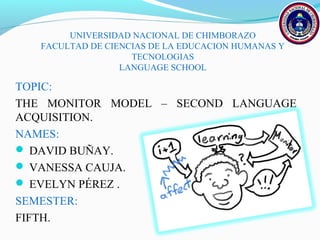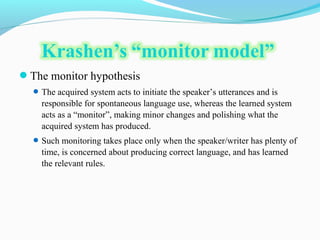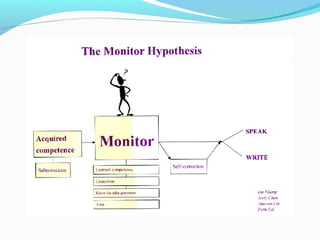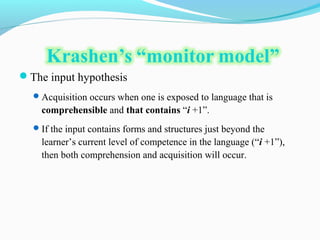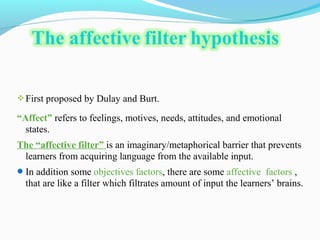The document discusses Stephen Krashen's 'Monitor Model' of second language acquisition, which includes five hypotheses: acquisition-learning, monitor, input, natural order, and affective filter. Krashen emphasizes the importance of subconscious acquisition over conscious learning and how comprehensible input and emotional factors impact language learning. This model has greatly influenced communicative language teaching, focusing on meaningful interaction over rote rule learning.
